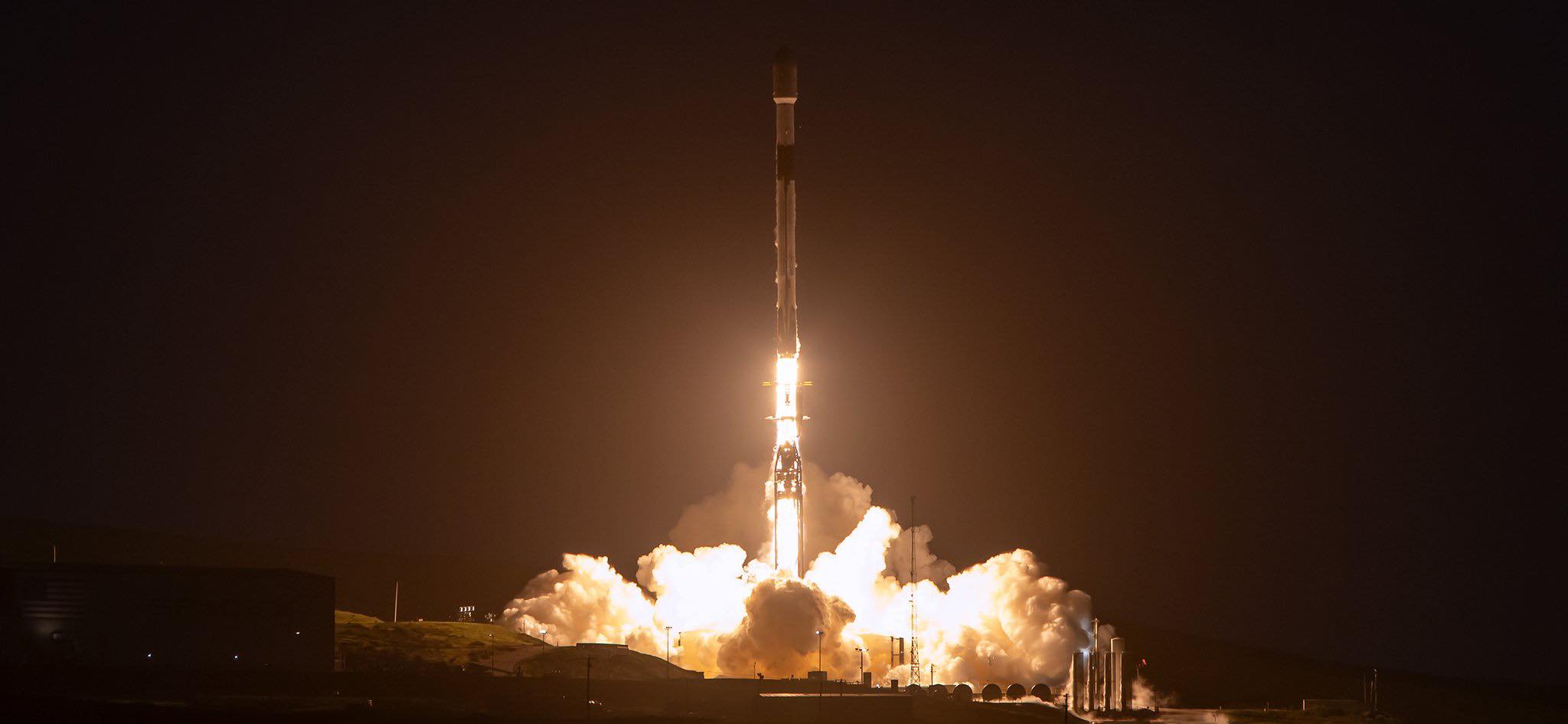
After suffering from three consecutive days of delay, you might be forgiven for thinking a launch on April Fool’s Day might be just that—a cruel April Fool prank. But for missions out of Vandenberg Space Force Base, Calif., which have so often fallen foul to weather or technical woes recently, 1 April proved the charm as a 15-times-flown Falcon 9 booster headed uphill for the fleet’s first flight of new month at 7:30 p.m. PDT Monday.
Flying last night’s mission from Space Launch Complex (SLC)-4E at the mountain-ringed West Coast launch base was B1071—a dedicated “Vandenberg Falcon” which has now ferried almost 600 discrete payloads into space on 15 launches since February 2022—and only 8.5 minutes later she returned to a pinpoint touchdown on the expansive deck of the Autonomous Spaceport Drone Ship (ASDS), “Of Course I Still Love You”, which has lain offshore in the Pacific Ocean since late last week. Aboard B1071 were 22 Starlinks, bringing to over 470 the total number of these flat-packed internet communications satellites emplaced in low-Earth orbit since the year’s dawn.
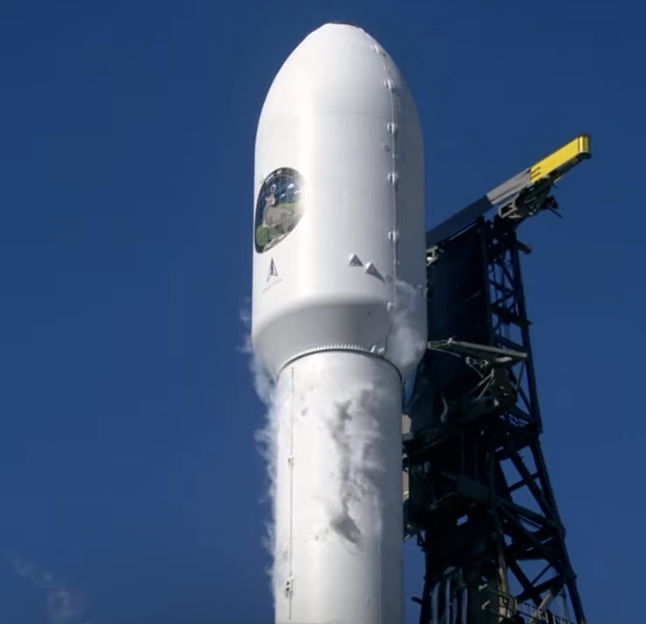
First flown in early February 2022, B1071’s opening pair of missions delivered two highly secretive payloads to orbit for the National Reconnaissance Office (NRO), followed by a pair of multi-customer Transporter “rideshare” stacks, Germany’s SARah-1 radar-imaging surveillance satellite, the NASA-led Surface Water and Ocean Topography (SWOT) spacecraft to investigate surface-water altitudes at centimeter-levels of precision and now nine batches of Starlinks. Of note, her fifth flight in October 2022 set a new record (now broken) jointly with the launch of Dragon Endurance and Crew-5 of just seven hours and ten minutes between pairs of Falcon 9 missions and she was also responsible for executing SpaceX’s 200th fully successful landing of a first-stage booster.
Having most recently flow in February, B1071 was turned around in only seven weeks to become the seventh Falcon 9 core to reach a 15th launch. First targeted to fly during a four-hour “launch window” between 7:30 p.m. PDT and 11:24 p.m. PDT last Thursday, teams elected to stand down from that attempt and rescheduled initially for a backup opportunity on Friday night, before SpaceX’s surprise announcement that it would attempt as many as three Falcon 9 missions from the East and West Coasts—with B1071’s Starlink flight falling in third place—during a dramatic triple-header on Saturday evening.
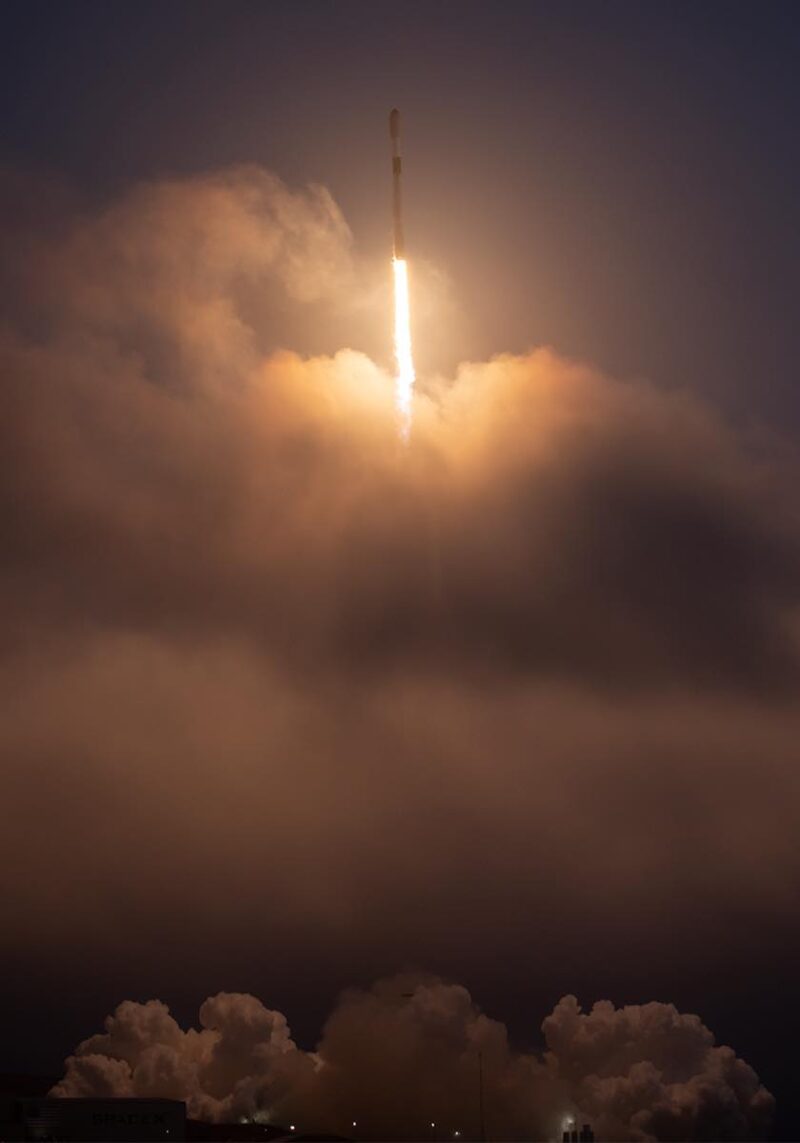
Had all three missions flown as planned, they might have set two new empirical records for the shortest interval (as little as 88 minutes) between a pair of launches and the shortest interval (as little as four hours and 38 minutes) between a trio of launches. Sadly, it was not to be, for although the first two flights soared out of the East Coast, B1071’s launch again succumbed to delay.
“Vehicle and payload remain healthy,” SpaceX noted in an update on X. “Teams continue to keep an eye on the weather as they work toward the next best opportunity for liftoff. We will announce a new launch date once confirmed on the Range.”
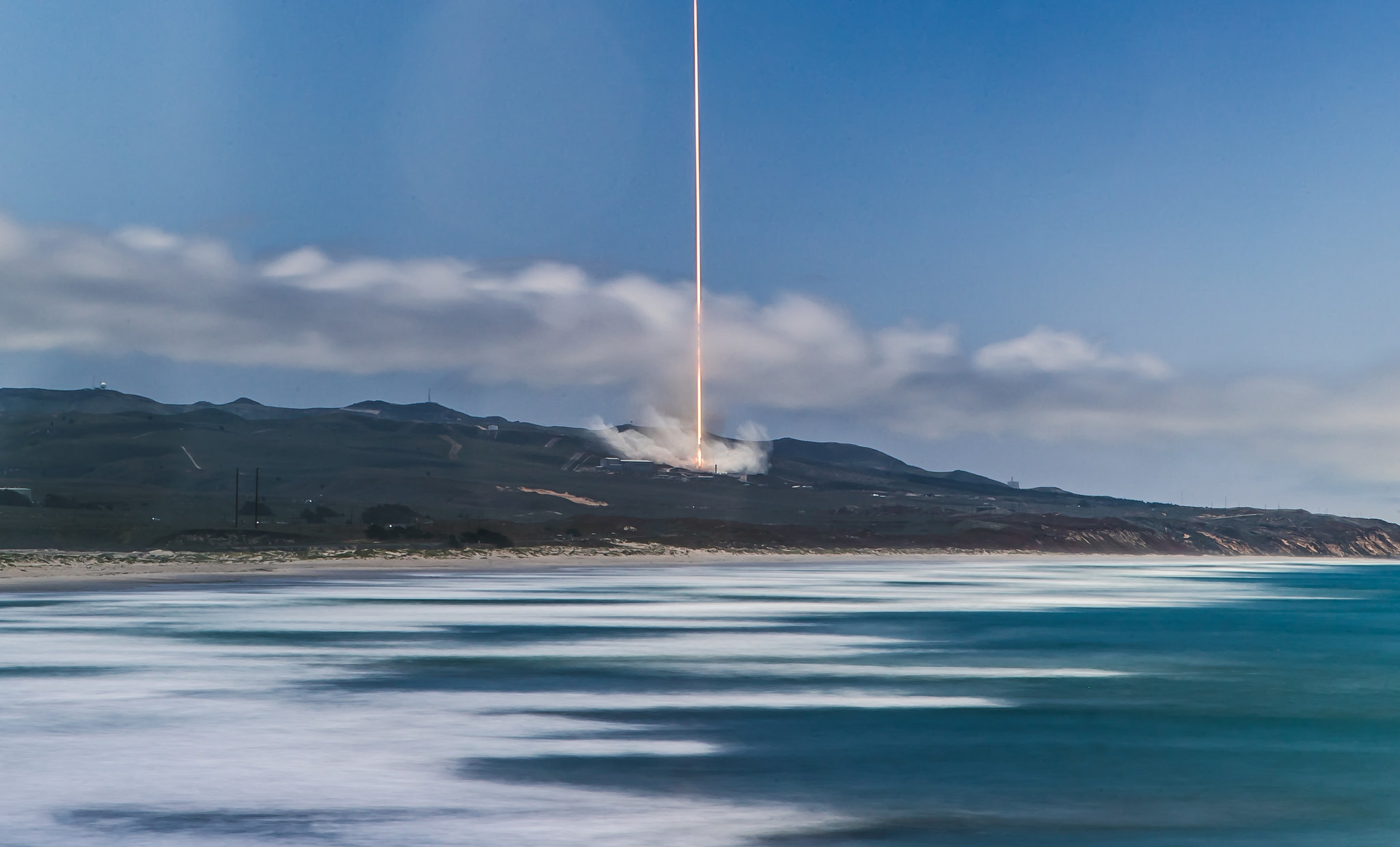
Yesterday, SpaceX announced that it was targeting a four-hour window opening at 7:30 p.m. PDT Monday for what would now become its first launch of April. And without further ado, B1071 roared into the darkness for Vandenberg’s 11th Falcon 9 launch of the year and the 71st from the West Coast since back in September 2013.
Across more than a decade of active service, no less than 17 Falcon 9 vehicles—including a brand-new booster that came online earlier this year and a “coast-swapping” bird which launched four times from the East Coast before moving to Vandenberg for her first mission last month—have risen from the West Coast, whose flight cadence has grown vigorously from a single launch in 2013 to five annual launches by 2017, six in 2018, then 13 by the close of 2022 and an astonishing 28 at the end of last year.
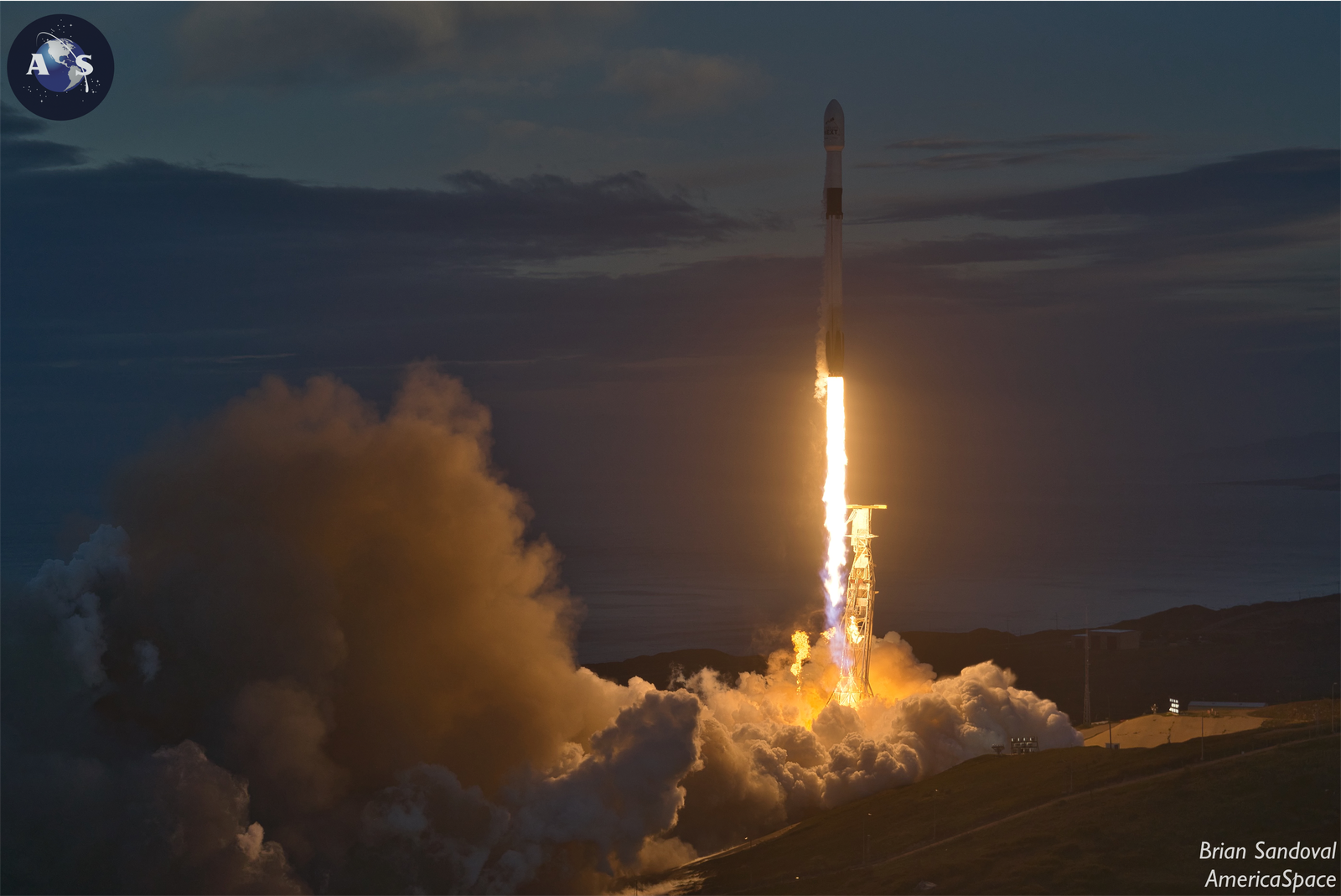
More than 40 missions since September 2021 have put over 1,400 Starlinks into orbit while a further nine between January 2017 and last May delivered dozens of Iridium NEXT global mobile communications satellites into space. Added to that list are four Transporter stacks, six Earth observation, radar-imaging and ocean altimetry satellites, two pairs of classified missions for the National Reconnaissance Office (NRO) and Space Development Agency (SDA) and NASA’s Double Asteroid Redirection Test (DART) to investigate the asteroid Didymos and impact its tiny companion, Dimorphos.
Eight and a half minutes after last night’s liftoff, B1071 returned to a smooth ASDS touchdown, as the Falcon 9’s second stage continued to push the latest 23-strong stack of Starlinks into orbit. Deployment occurred just over an hour into the mission, bringing to more than 6,000 the total number of satellites launched on over 150 Falcon 9 flights using 22 different boosters since May 2019.
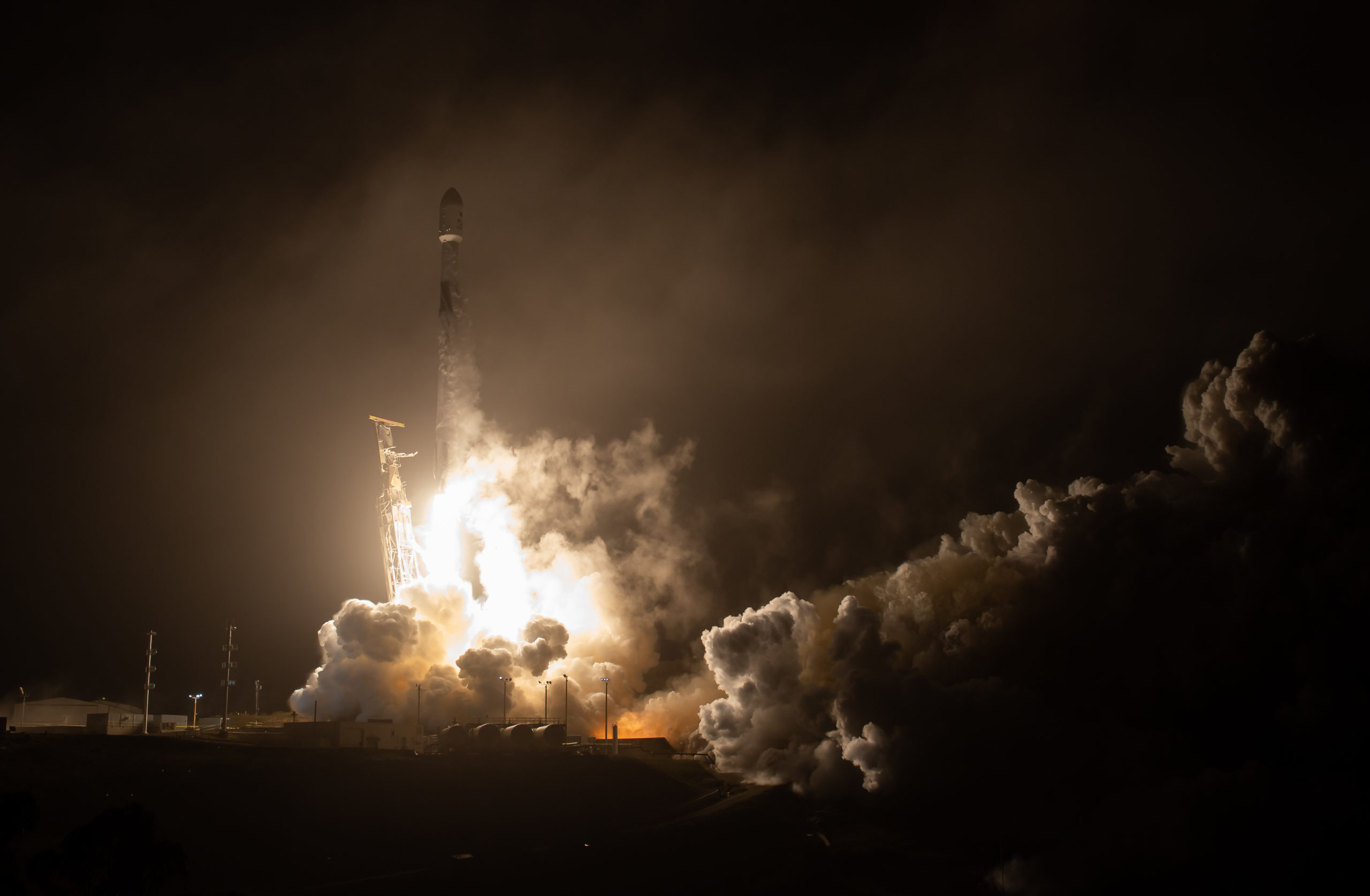
As a network, Starlink enables high-speed and low-latency internet provision to over 70 sovereign nations and international markets in North and South America, Europe, Asia, Oceania and Africa. Landlocked Eswatini—formerly Swaziland—in southern Africa and Honduras and Paraguay joined Starlink in December and SpaceX revealed that network availability was extended to Argentina and Mongolia in March 2024.
The downsized V2 Mini satellites, first flown in February of last year, boast three to four times greater “usable” bandwidth than earlier Starlink iterations. “V2 Minis include key technologies—such as more powerful phased-array antennas and the use of E-Band for backhaul—which will allow Starlink to provide 4x more capacity per satellite than earlier iterations,” SpaceX explained. “Among other enhancements, V2 Minis are equipped with new argon Hall thrusters for on-orbit maneuvering.”
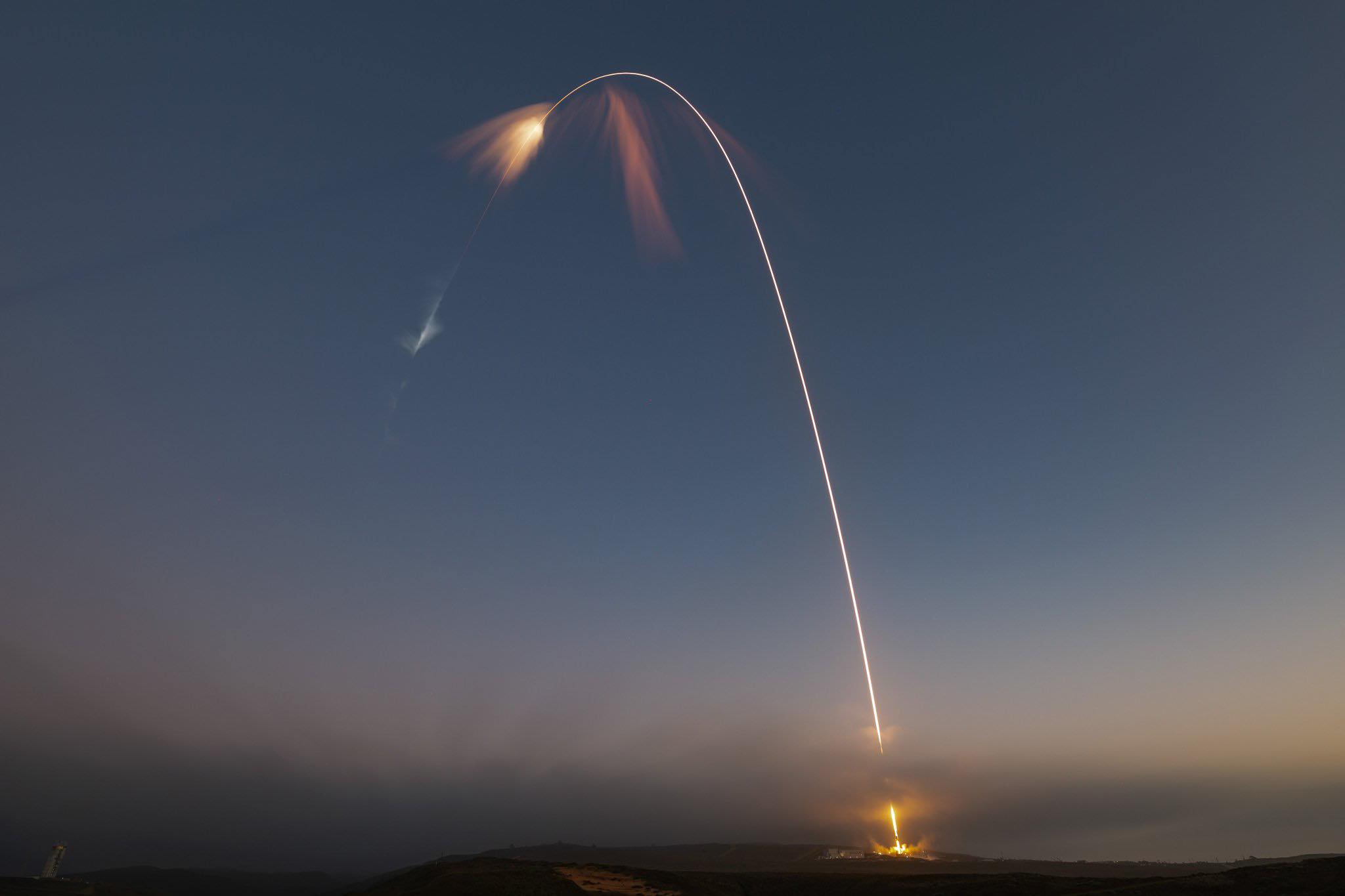
Florida-based intercity operator Brightline adopted Starlink on its trains in 2023, the first passenger rail service in the world to do so. Additionally, El Salvador’s Ministry of Education has begun integrating Starlink capability into its schools to help close the digital divide between urban and remote rural communities and 50 Rwandan schools are now connected via Starlink’s high-speed internet service.
And in January, SpaceX lofted its first six “Direct-to-Cell” Starlinks, which permit mobile network providers to offer “seamless global access to texting, calling and browsing”, whether “on land, lakes or coastal waters”, without the need to change hardware or firmware. Within six days of that first launch, SpaceX engineers sent and received their first text messages via Direct-to-Cell and as of March Starlink reportedly has about 2.6 million registered subscribers or customers worldwide.

April’s successful start opens the floodgates for an aggressive campaign of launches in the coming month, following no less than 12 missions in March. In addition to a regular sprinkling of Starlink batches, this month’s roster is expected to include the multi-customer Bandwagon-1 rideshare mission—which reportedly includes smallsat payloads from the United States, Japan, India, South Korea and Australia—and the deployment of the inaugural Weather System Follow-on Microwave (WSF-M) next-generation operational environmental satellite for the U.S. Space Force.
Equipped with a passive microwave imaging radiometer and hosted Energetic Charged Particle (ECP) sensor, the WSF-M spacecraft were built by Ball Aerospace, which in February 2024 was acquired by BAE Systems, Inc., and folds into its Space & Mission Systems division. Operating from Sun-synchronous orbit at an altitude of some 515 miles (830 kilometers), WSF-M satellites seek to mitigate three high-priority “gaps” in the Department of Defense’s Space Based Environmental Monitoring (SBEM) capability: ocean-surface vector winds, tropical cyclone intensities and energetic charged particles in low-Earth orbit.




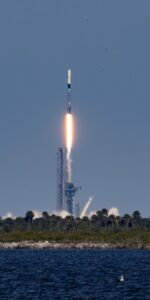

2 Comments
Leave a Reply2 Pings & Trackbacks
Pingback:SpaceX Completes Weekend Triple-Header, Launches 11-Payload Bandwagon-1 Stack - AmericaSpace
Pingback:SpaceX Completes Weekend Triple-Header, Launches 11-Payload Bandwagon-1 Stack - SPACERFIT